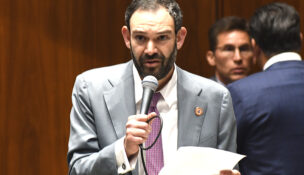Painkiller use among Arizonans soars
Arizona Capitol Reports Staff//August 24, 2007//[read_meter]
Disabled after 11 back surgeries for what one doctor called “a congenitally deficient spine,” Mary Lynn O’Connor has taken prescription painkillers Oxycontin or morphine for the past seven years. O’Connor,...
No tags for this post.

















